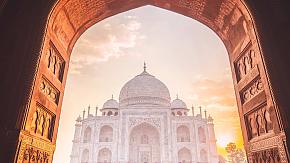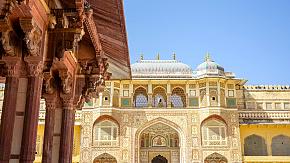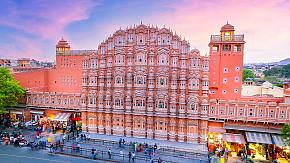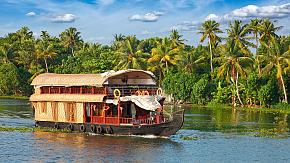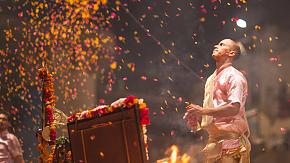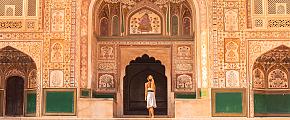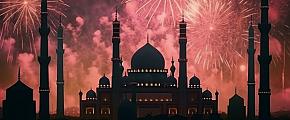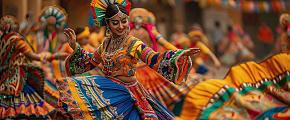Taj Mahal History: When and Why It Was Built
The majestic Taj Mahal is India's most famous monument, set in an extensive, symmetrical garden on the Yamuna riverbank in the city of Agra, India. Each year, millions of people come from across the world to admire its beauty and listen to the story behind its construction. If you are considering a vacation in India, there is no reason not to discover this beautiful site. Follow this article to get essentials about Taj Mahal history, including the location, stories beind it, facts about Taj Mahal, and useful tips.
When Was the Taj Mahal Built
The construction of Taj Mahal was built from 1632 to 1648, taking over 20 years. Then another 5 years were spent on the building of the enclosure, the ancillary buildings such as gardens, so the whole complex was completed in 1653.
Why Is It Called the Taj Mahal
The name of the Taj Mahal is from Persian and Arabic, meaning "Crown of Palace". The word "Taj" means "crown" in Persian, while "Mahal" comes from Arabic, meaning "palace". More interestingly, it was commissioned by Emperor Shah Jahan as a mausoleum for his beloved wife Mumtaz Mahal, whose name means "Crown of the Palace". It's not only fascinating architecture but also shows eternal love.
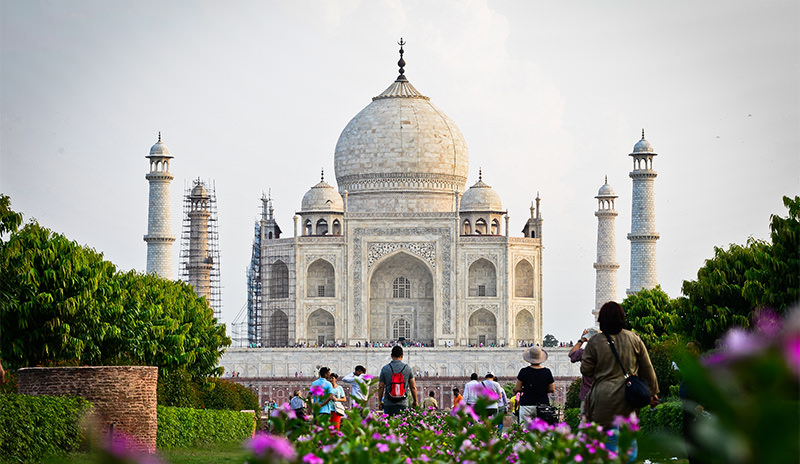 Taj Mahal in India
Taj Mahal in India
Where Is Taj Mahal
The final resting place of Mumtaz Mahal is on the bank of the Yamuna River in Agra, India. But no one knows the exactly reasons. Below are some of the possible reasons:
1) In the 17th century, this area was also where all the gardens and palaces of the noble Mughals were located. It was therefore justifiable that the empress should rest in peace here.
2) The Yamuna River is one of the tributaries of the Ganges, a purifying river sacred to the Hindu population. Shah Jahan hoped the soul of her deceased wife would be purified by placing her here.
3) The mausoleum for noble Mumtaz Mahal would be extremely exquisite and heavy. So the banks of the Yamuna River is most suitable, whose water can moiturize the mausoleum's wooden foundation (mainly timber) to keep its stabilization.
Why Was the Taj Mahal Built
The Love Story of Shah Jahan and Mumtaz Mahal
Shah Jahan met Mumtaz Mahal at one of the booths of the royal bazaar in 1607, long before he became the emperor of the Mughal Empire. He was then 15 years old, called Prince Khurram, and Mumtaz Mahal, 14, called Arjumand Banu Baygam, whose father would later become the prime minister. It was love at first sight. However, he didn't marry her until 1612, five years after their betrothal, after marrying Kandahari Begum, his first wife. (He would later have a third wife in 1617).
On March 27, 1612, Prince Khurram and Arjumand Banu Baygam got married. The prince gave his wife the name Mumtaz Mahal, meaning "chosen one of the palace". Despite having three wives, the prince's whole delight was centered on Mumtaz Mahal, according to Inayat Khan, Shah Jahan's historian. The couple had a loving marriage, with intimacy, and deep affection for each other. Throughout Khurram's earlier military campaigns, she always accompanied him in spite of her pregnancies. Even after Shah Jahan's accession to the throne she served as a confidant and trusted advisor who often gave him advice both on private and public matters.
The Death of Mumtaz Mahal
In their 19 years of marriage, they had 14 children altogether, but only 7 of them lived past infancy. The birth of the 14th kid led to the death of Mumtaz Mahal. On June 17, 1631, she died in Shah Jahan's arm in a military tent after giving birth to a healthy baby girl. Her body was temporarily buried near the encampment at Burhanpur. It is said that the emperor was so sad that he started a seclusion for a year, mourning for his beloved wife. When people saw him again, his hair had turned gray and his back was bent.
In December 1631, Mumtaz Mahal's remains were carried to Agra (796 km / 2,611,548 feet from Burhanpur). Her body was escorted by thousands of soldiers, and crowds of mourners lined the road. Shah Jahan had her remains temporarily buried on a land near where Taj Mahal would be built. Still full of grief, he decided to create an exquisite mausoleum that none could rival.
The Last Days of Shah Jahan
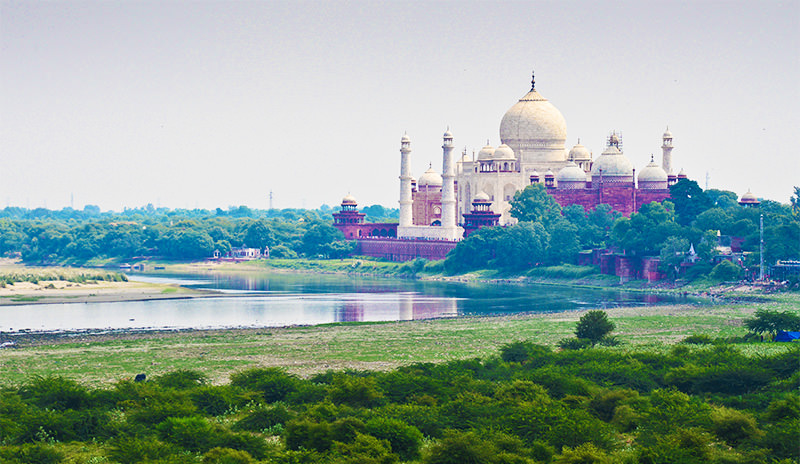 A Distant View of the Taj Mahal From the Red Fort in Agra
A Distant View of the Taj Mahal From the Red Fort in Agra
After the completion of the Taj Mahal, Shah Jahan was usurped by his third son Aurangzeb, and therefore imprisoned in the Red Fort in Agra (close to the Taj Mahal). During his remaining days, he could only look out of the window, watching the cold mausoleum and missing his beloved wife. When he died in January 1666, he was buried in the mausoleum next to Mumtaz Mahal.
Fun Facts About Taj Mahal
Taj Mahal Is Belended Hindu and Islamic Style
As the best example of Mughal architecture, the Taj Mahal is a fusion of Hindu and Islamic architecture, interpreting many of the Hindu traditions in an Islamic form.
Who Designed the Taj Mahal
It is not known exactly who was responsible for the design of the monument. But the chief architect is said to be Ustad Ahmad Lahouri, who is also credited with the design of the famous Red Fort of Delhi.
The number of workers constructing the Taj Mahal is believed to have been around 20,000, including architects, draughtsmen, stonemasons, sculptors, dome builders, calligraphers, and carpenters. And about 1,000 elephants were used to carry building materials. Sadly, a story showed that their hands were all cut off by the minions of Shah Jahan so that they could never create a building like it.
How Much Did the Construction of the Taj Mahal Cost
Some say the monument is estimated to have cost 53 billion Indian rupees ($615 million) in modern values. Most was spent on the stones and workers' wages.
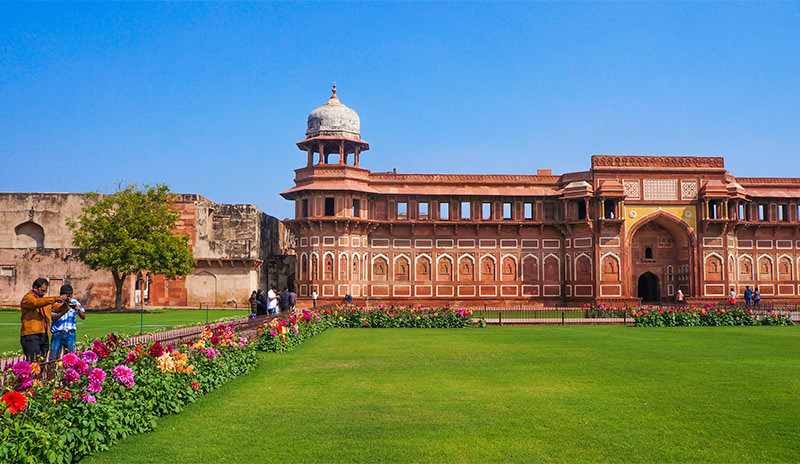 The Red Fort in Agra, India
The Red Fort in Agra, India
Its Building Materials Were From All Over Asia
The materials used to build the Taj Mahal were from all over India and Asia. Here is a list of the building materials and their origins:
- Brick: Agra
- Sandstone: 28 miles (45km) away from Agra
- White marble: Makrana, 225 miles (360 km) away from Agra
- Jaspers: Punjab
- Jade and crystal: China
- Turquoise: Tibet
- Lapis lazuli: Afghanistan
- Sapphire: Sri Lanka
- Carnelian: Arabia
It Was Damaged and Restored
In its golden days, the wealthy Mughal Empire had enough money for the maintenance of the Taj Mahal. But when the empire fell (which began in 1707), the monument suffered as well. In 1857, the Mughals were ousted by the British who took over India. The beautiful gemstones from the walls were cut, and silver candlesticks and doors stolen. Fortunately, Lord George Curzon, the governor general of the Indies from 1899 to 1905, ordered a stop to the loot and initiated a restoration of the monument.
It Has Received Many Honors
Undoubtedly a masterpiece of the Mughal architecture, the Taj Mahal, a must-visit in India, has amazed and astounded a great number of travelers over the centuries (with some 7 million visitors a year or about 70,000 a day in the peak tourist season), and has achieved worldwide recognition. Here're some honors of it:
- UNESCO World Heritage Site (1983) (The UNESCO also describes it as "the jewel of Muslim art in India and India's greatest architectural achievement".)
- One of the New Seven Wonders of the World (2007) voted by over 100 million people worldwide
- One of the 50 Places of a Lifetime by the National Geographic
- The Symbol of Love: shows the eternal love of Shah Jahan and Mumtaz Mahal
- One of the Most Beautiful Mausoleums in the World
- The Nobel Literature Rabindranath Tagore described the Taj Mahal as "a teardrop on the cheek of time".
- Asia's Leading Tourist Attraction (2012) by World Travel Awards
To protect this great monument, the India government has taken a number of measures, including closing factories responsible for the deterioration of the mausoleum's gleaming white marble façade, and limiting visiting time to combat overcrowding.
Plan Your Visit to Taj Mahal With Odynovo
Can't wait to visit Taj Mahal? Now is a good time to plan your India tour. Just let us know your requirements via [email protected] and one of our specialists will be in touch to create a unique India travel plan for you at no cost.
Related Posts You May Like
What Our Clients Say
Explore the latest verified reviews of Odynovo's travel services on Tripadvisor, Google, Trustpilot, Product Review and more trusted platforms.

